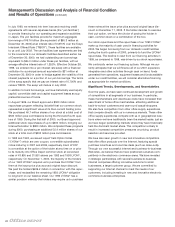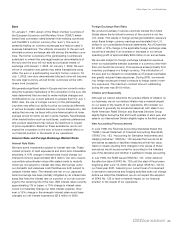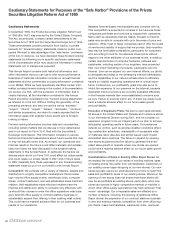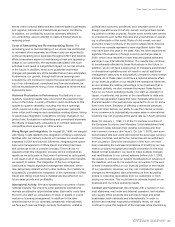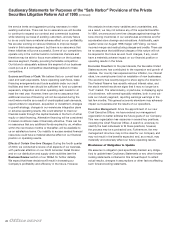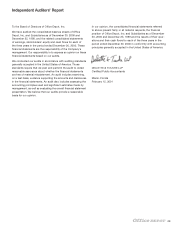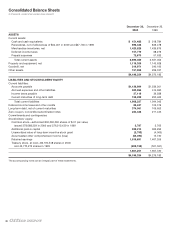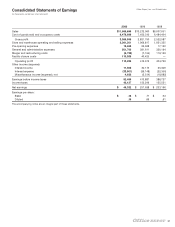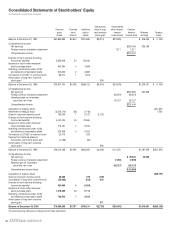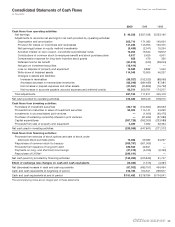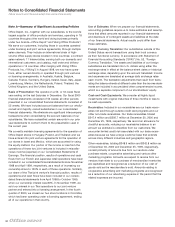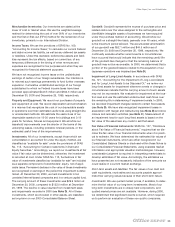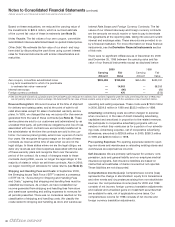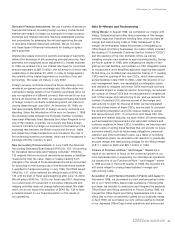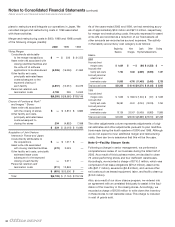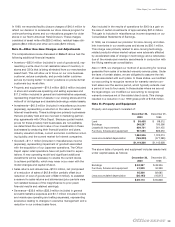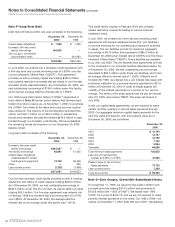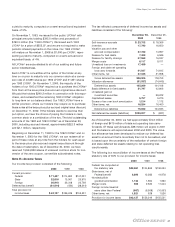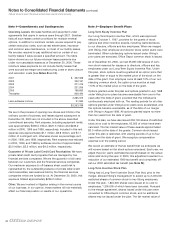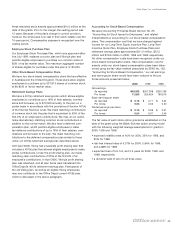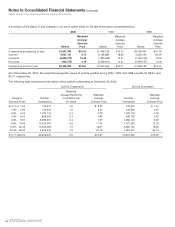Office Depot 2000 Annual Report Download - page 36
Download and view the complete annual report
Please find page 36 of the 2000 Office Depot annual report below. You can navigate through the pages in the report by either clicking on the pages listed below, or by using the keyword search tool below to find specific information within the annual report.
34
Notes to Consolidated Financial Statements
(Tabular amounts are in thousands except share and per share amounts)
Note A—Summary of Significant Accounting Policies
Office Depot, Inc., together with our subsidiaries, is the world’s
largest supplier of office products and services, operating in 18
countries throughout the world and doing business primarily
under two brands—Office DepotTand Viking Office ProductsT.
We serve our customers, including those in countries operated
under licensing and joint venture agreements, through multiple
sales channels. They include an international chain of high-
volume office supply stores located in nine countries; a contract
sales network; 11 Internet sites, serving both our domestic and
international customers; and catalog, mail order and delivery
operations in 16 countries. After merging with Viking Office
Products, Inc. (“Viking”) in August 1998, we now have opera-
tions, either owned directly or operated through joint ventures
or licensing arrangements, in Australia, Austria, Belgium,
Canada, France, Germany, Hungary, Ireland, Israel, Italy, Japan,
Luxembourg, Mexico, the Netherlands, Poland, Thailand, the
United Kingdom, and the United States.
Basis of Presentation: We operate on a 52- or 53-week fiscal
year ending on the last Saturday in December. Our fiscal 2000
financial statements consisted of 53 weeks; all other periods
presented in our consolidated financial statements consisted of
52 weeks. We have included account balances from our wholly-
owned and majority-owned subsidiaries in our consolidated
financial statements. We eliminate any significant intercompany
transactions when consolidating the account balances of our
subsidiaries. We have reclassified certain amounts in our prior
year statements to conform them to the presentation used in
the current year.
We currently maintain licensing agreements for the operation of
Office Depot stores in Hungary, Poland, and Thailand; and we
have entered into joint venture agreements for the operation of
our stores in Israel and Mexico, which are accounted for using
the equity method. Our portion of the income or loss from the
operations of those two joint ventures is included in miscella-
neous income (expense) on our Consolidated Statements of
Earnings. The financial position, results of operations and cash
flows from our French and Japanese retail operations have been
included in our consolidated financial statements since November
1998 and April 1999, respectively, as a result of increasing our
ownership share to 100% in each of those operations. Similarly,
our share of the Thai joint venture’s financial position, results of
operations and cash flows have been included in our consoli-
dated financial statements from April 1998 to October 1999,
when our ownership interest was 80%. In November 1999, we
sold our interest in our Thai operations to our joint venture
partner and entered into a licensing arrangement. In the fourth
quarter of 2000, we closed our two store locations in Colombia,
which had been operating under a licensing agreement, ending
all of our operations in that country.
Use of Estimates: When we prepare our financial statements,
accounting guidelines require us to make estimates and assump-
tions that affect amounts reported in our financial statements
and disclosure of contingent assets and liabilities at the date
of our financial statements. Actual results could differ from
those estimates.
Foreign Currency Translation: Our subsidiaries outside of the
United States record transactions using their local currency
as their functional currency. In accordance with Statement of
Financial Accounting Standards (“SFAS”) No. 52, “Foreign
Currency Translation,” the assets and liabilities of our foreign
subsidiaries are translated into U.S. dollars using either the
exchange rates in effect at the balance sheet dates or historical
exchange rates, depending upon the account translated. Income
and expenses are translated at average daily exchange rates
each month. The translation adjustments that result from trans-
lating the balance sheets at different rates than the income state-
ments are included in accumulated other comprehensive income,
which is a separate component of our stockholders’ equity.
Cash and Cash Equivalents: We consider all highly liquid
investments with original maturities of three months or less to
be cash equivalents.
Receivables: Included in our receivables are our trade receiv-
ables not sold through outside credit card programs and our
other non-trade receivables. Our trade receivables totaled
$547.4 million and $506.7 million at December 30, 2000 and
December 25, 1999, respectively. We record an allowance for
doubtful accounts, reducing our receivables balance to an
amount we estimate is collectible from our customers. We
encounter limited credit risk associated with our trade receiv-
ables because we have a large customer base that extends
across many different industries and geographic regions.
Other receivables, totaling $348.9 million and $342.8 million as
of December 30, 2000 and December 25, 1999, respectively,
consist primarily of amounts due from our vendors under
purchase rebate, cooperative advertising and various other
marketing programs. Amounts we expect to receive from our
vendors that relate to our purchase of merchandise inventories
are capitalized and recognized as a reduction of our cost of
goods sold as the merchandise is sold. Amounts relating to
cooperative advertising and marketing programs are recognized
as a reduction of our advertising expense in the period that the
related expenses are incurred.


